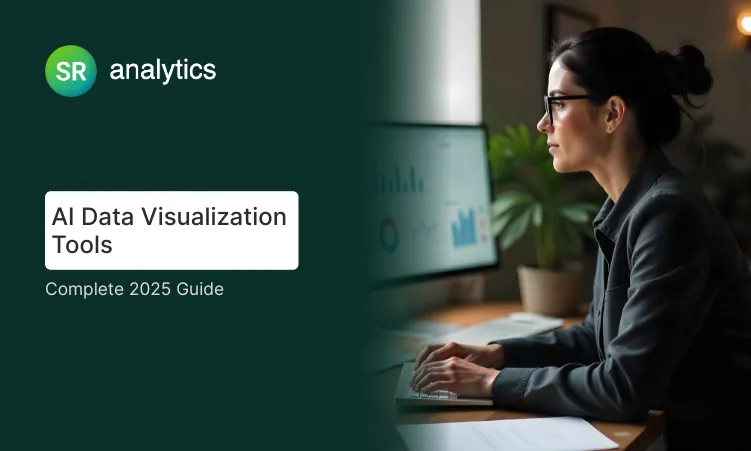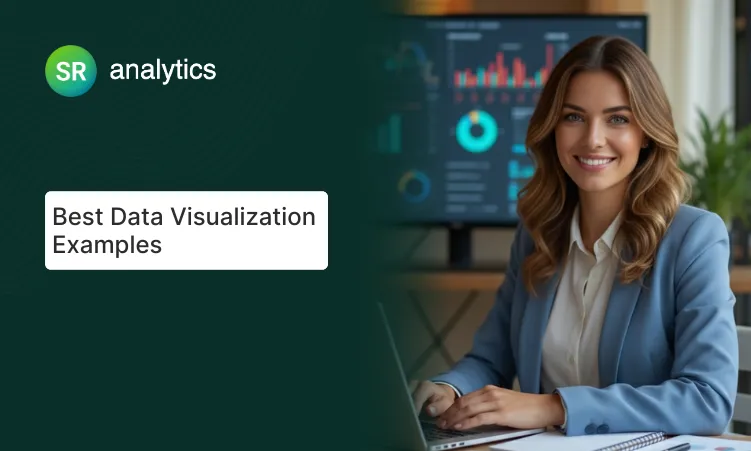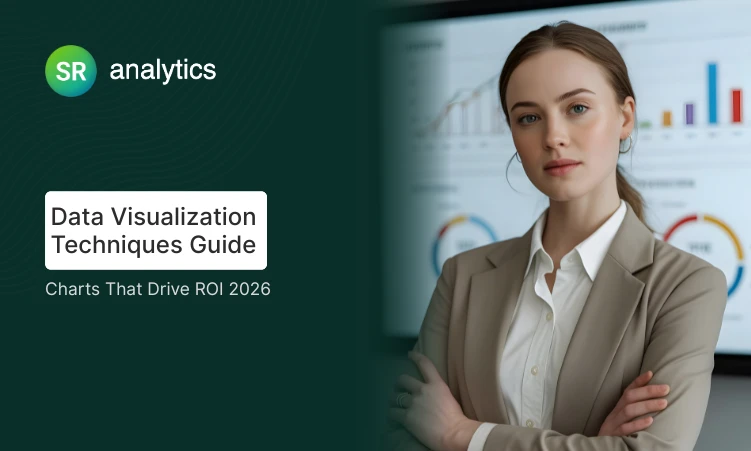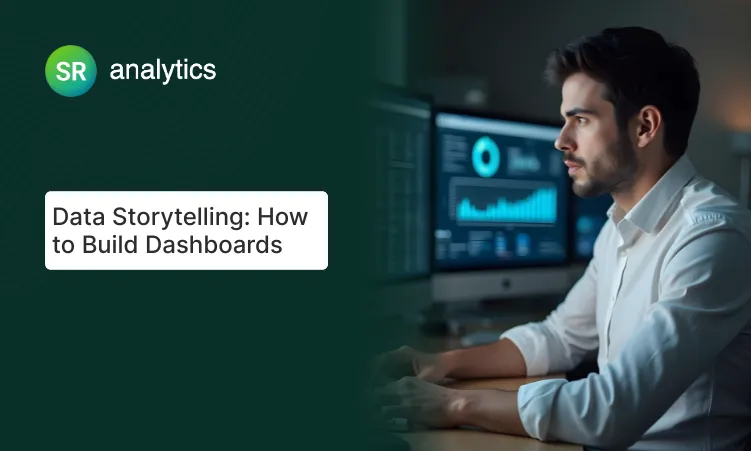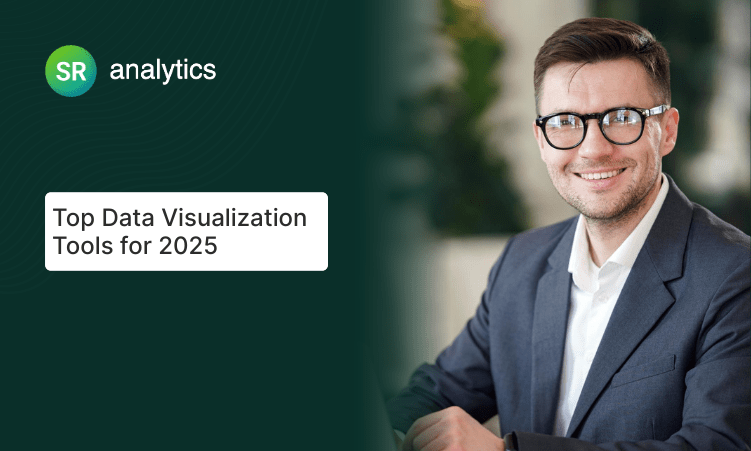Highlight
- 65% of organizations have adopted or are actively investigating AI technologies for data and analytics in 2025
- AI-powered visualization delivers 73% faster insights and saves analysts over 8 hours per week
- Enterprise adoption of AI data tools growing at 27.67% CAGR, reaching $826.70bn market by 2030[1]
- Natural language querying eliminates the need for SQL knowledge, democratizing data access
- Real-time anomaly detection prevents costly mistakes before they impact business operations
What separates companies that thrive with data from those drowning in spreadsheets?
The answer lies in how they handle the explosion of information hitting their systems daily. As of 2025, nearly 65% of organizations have adopted or are actively investigating AI technologies for data and analytics, but here’s what most don’t realize: traditional visualization tools weren’t built for the volume and complexity of modern data.
Here’s what I’ve learned from working with data teams across different industries: the biggest barrier to AI adoption isn’t technology—it’s trust. When analysts spend their days fighting with data instead of analyzing it, they become skeptical of any new solution promising to “revolutionize” their workflow. But something fundamental has shifted in 2025.
The organizations that embraced AI visualization aren’t just seeing incremental improvements—they’re experiencing a complete transformation in how decisions get made.
That changed when AI entered the picture.
Quick Answer
AI data visualization tools use artificial intelligence to automatically analyze data, identify patterns, and create interactive visualizations through natural language commands. Agentic AI for data analytics delivers 73% faster insights, saves analysts over 8 hours per week, and enables businesses to move from reactive dashboards to proactive, always-on analytics that supports fraud detection, supply chain optimization, and real-time decision making.
What Are AI Data Visualization Tools?
AI data visualization tools combine artificial intelligence with traditional charting to automatically analyze data and generate insights through conversational interfaces. Instead of manually building charts, you ask questions like “Why did sales drop in Q3?” and get instant visual answers.
Here’s what makes them different from traditional BI tools:
- Natural language querying – No SQL knowledge required
- Automatic pattern detection – AI finds insights you might miss
- Predictive capabilities – Forecasting built into visualizations
- Contextual explanations – AI explains what the data means
The transformation is significant. In my recent projects, teams using AI visualization tools reduced their time-to-insight by an average of 65% compared to traditional methods.
The transformation is remarkable. Nearly everything today – from the way we work to how we make decisions – is directly or indirectly influenced by AI, according to McKinsey’s latest research.
Critical Decision Framework: Choosing AI Data Visualization Tools
Before diving into specific tools, here’s the decision framework I use with clients:
Budget and Scale Matrix
| Organization Size | Budget Range | Recommended Approach |
|---|---|---|
| <50 users | $0-$1,500/month | Start with Google Looker Studio or Zoho Analytics |
| 50-200 users | $1,500-$10,000/month | Power BI Copilot or ThoughtSpot |
| 200-1000 users | $10,000-$50,000/month | Tableau Einstein or Qlik Sense |
| 1000+ users | $50,000+/month | Custom enterprise deployment |
Top 10 Best AI Data Visualization Tools (Based on Real Implementation Experience)
I’ve personally implemented or evaluated each of these AI data visualization tools. Here’s my honest assessment based on actual deployments:
1. Microsoft Power BI + Copilot
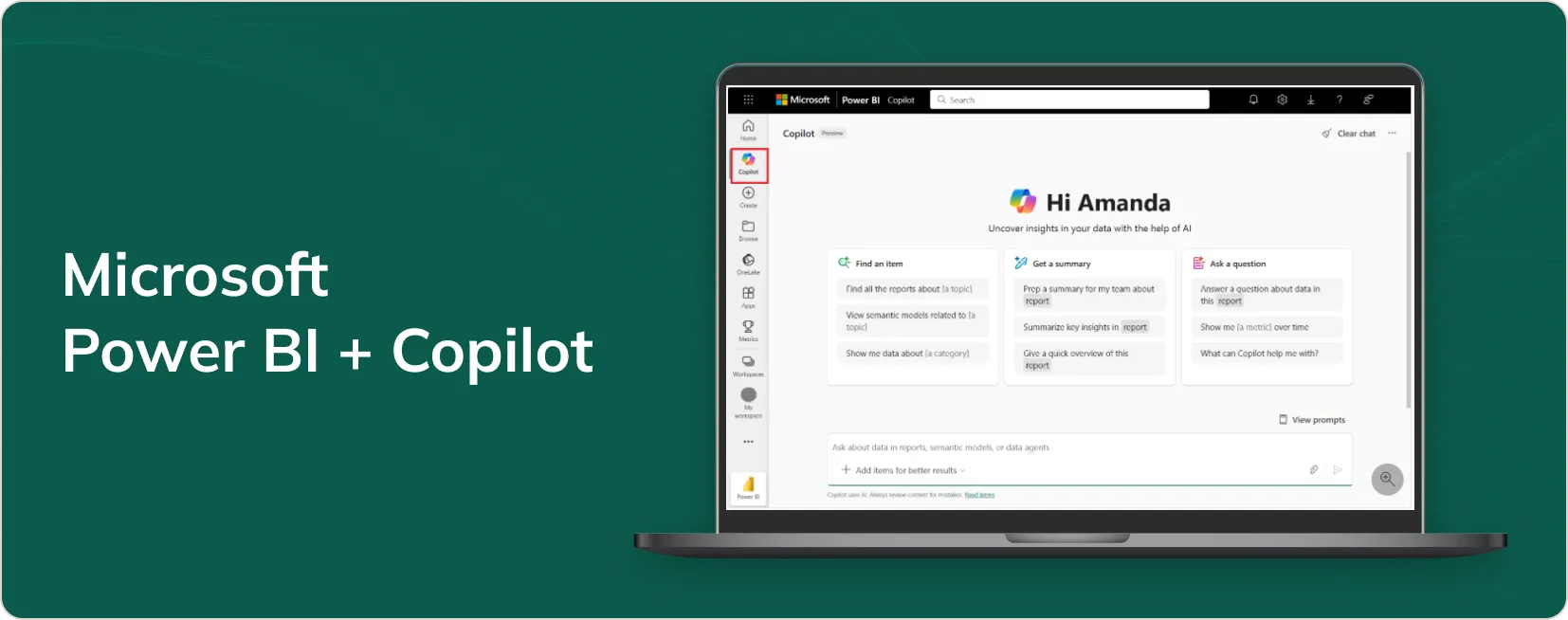
Best for: Organizations already using Microsoft 365 Worst for: Complex data science workflows or non-Microsoft environments
Power BI’s Copilot integration is the most seamless implementation of AI for data visualization I’ve encountered. It understands business context because it connects to your existing Microsoft ecosystem.
What Microsoft Won’t Tell You:
API Limitations:
- REST API has 1,000 requests/hour limit for Pro licenses
- Real-time streaming limited to 1M rows/hour
- No direct Python/R integration without Premium
- Limited custom connector development capabilities
Hidden Costs:
- Premium Per User: $20/month (required for AI features)
- Premium capacity: $5,000+/month for enterprise features
- Azure integration costs can add 30-50% to total cost
- Training and change management: $15,000-50,000
When Power BI Failed: A healthcare client spent $75,000 implementing Power BI across 200 users, only to discover their HIPAA compliance requirements couldn’t be met without Premium capacity—doubling their annual costs. The natural language queries consistently misinterpreted medical terminology, requiring constant corrections.
Data Source Compatibility Issues:
- Struggles with real-time data from non-Microsoft sources
- Oracle integration requires expensive gateways
- Salesforce connector limitations with large datasets
- Poor handling of semi-structured data
Security Limitations:
- Row-level security configuration is complex
- Limited audit trail capabilities in Pro version
- GDPR compliance requires careful configuration
- Data residency controls limited outside Azure regions
Learning Curve Reality:
- Power users: 2-4 weeks to productivity
- Business users: 6-8 weeks with training
- Administrators: 12+ weeks for enterprise deployment
- DAX formula language requires dedicated training
Pricing: $10/user/month (Pro) to $20/user/month (Premium Per User), plus infrastructure costs
Source: Microsoft Power BI Official Pricing
2. Tableau + Einstein AI
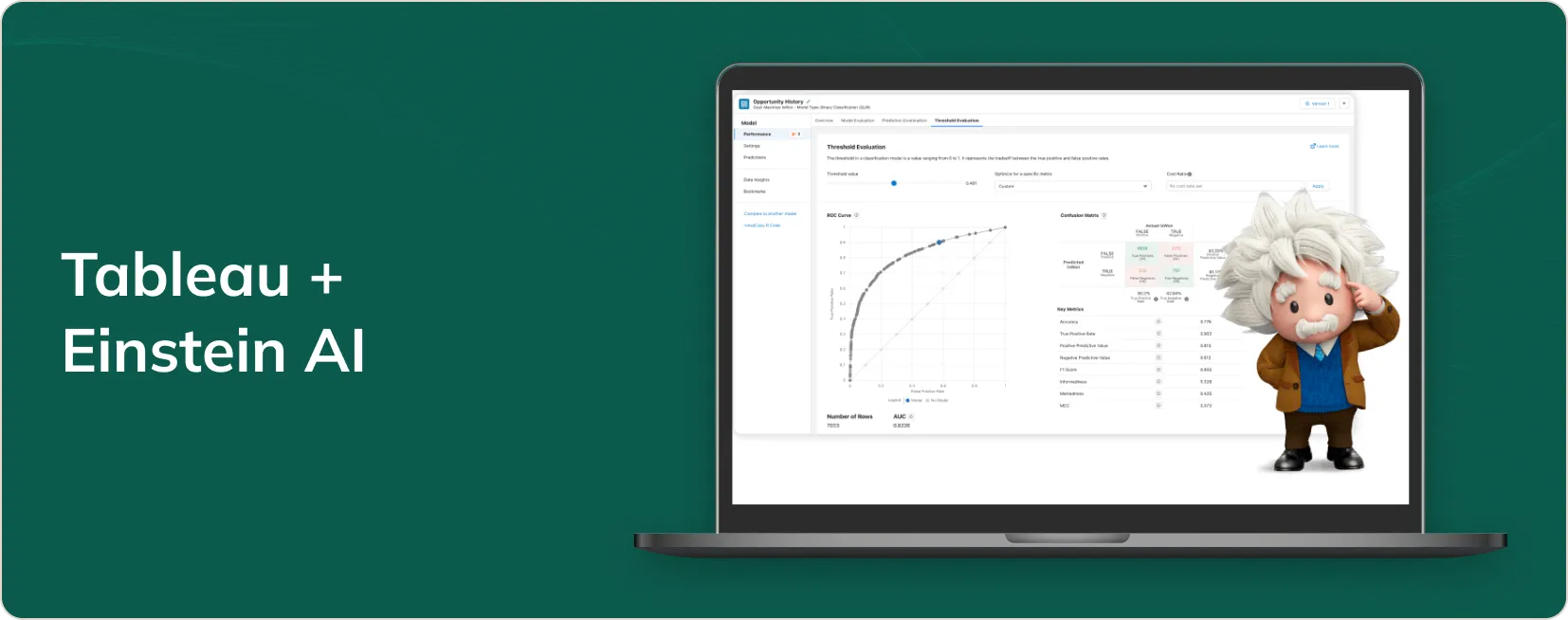
Best for: Complex enterprise analytics requiring deep statistical analysis Worst for: Quick deployments or budget-conscious organizations
Tableau’s Einstein integration transforms traditional BI into predictive analytics. The “Explain Data” feature is particularly powerful among ai-powered data visualization tools—it automatically investigates unusual data points.
Tableau’s Dirty Secrets:
Implementation Reality:
- Average enterprise deployment: 6-9 months
- Total cost of ownership typically 2.5x license fees
- Requires dedicated administrator (full-time for 500+ users)
- Data preparation often takes longer than traditional BI
API and Integration Nightmares:
- REST API lacks advanced filtering capabilities
- Embedding requires expensive developer licenses
- Limited real-time refresh capabilities
- JavaScript API documentation is incomplete
Performance Issues:
- Slow performance with datasets >10M rows
- Memory-intensive workbooks crash frequently
- Extract refresh times can exceed 8 hours
- Mobile performance significantly degraded
Hidden Costs Breakdown:
- Creator licenses: $75/user/month
- Viewer licenses: $15/user/month (often underestimated)
- Server infrastructure: $50,000-200,000 annually
- Professional services: $100,000-500,000
- Ongoing maintenance: 20-30% of license costs annually
Training Investment Required:
- Basic users: 40+ hours training
- Advanced users: 120+ hours training
- Administrators: 200+ hours plus certification
- Ongoing education: $5,000-15,000 annually
Data Privacy Concerns:
- Default settings send metadata to Tableau’s servers
- GDPR compliance requires extensive configuration
- Data extracts stored unencrypted by default
- Limited control over data residency
Pricing: $75/user/month for Creator, with significant additional costs
Source: Tableau Pricing Guide
3. ThoughtSpot Sage
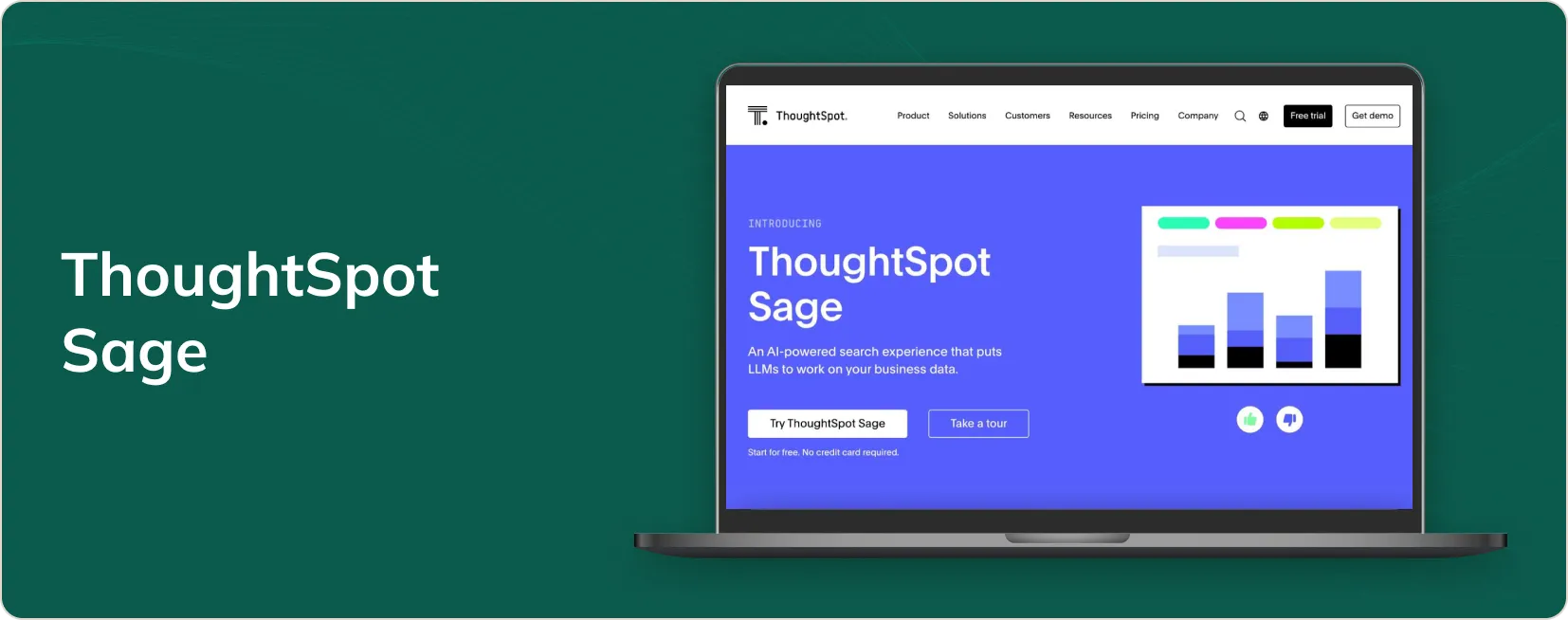
Best for: Self-service analytics with search-driven exploration Worst for: Highly regulated environments or complex data governance
ThoughtSpot pioneered Google-like search for enterprise data. Their Sage AI makes complex data as searchable as the web, ranking among the best AI data visualization tools for search-driven analytics.
ThoughtSpot’s Critical Weaknesses:
Vendor Lock-in Risks:
- Proprietary search index format
- No export capabilities for search configurations
- Custom calculations locked in proprietary language
- Migration to other platforms requires complete rebuild
Search Limitations Nobody Mentions:
- Requires extensive synonym configuration
- Struggles with industry-specific terminology
- Boolean logic often produces unexpected results
- Performance degrades significantly with complex joins
Scalability Constraints:
- Performance degrades with >5B row datasets
- Real-time updates limited to specific data sources
- Concurrent user limitations not clearly documented
- Memory requirements scale exponentially with data complexity
Integration Challenges:
- Limited API functionality for complex operations
- Embedding requires significant custom development
- No direct integration with popular data science tools
- ETL processes must be completely rebuilt
Compliance and Governance Issues:
- Limited audit trail capabilities
- Difficult to control data access granularly
- No built-in data lineage tracking
- Regulatory reporting capabilities are basic
True Cost Analysis:
- Base platform: $95/user/month
- Implementation services: $150,000-400,000
- Data modeling and optimization: $50,000-150,000
- Annual maintenance and support: 25% of total costs
- Training and change management: $25,000-75,000
Pricing: $95/user/month, but expect 3-4x total implementation costs
Source: ThoughtSpot Pricing Information
4. Qlik Sense + Insight Advisor
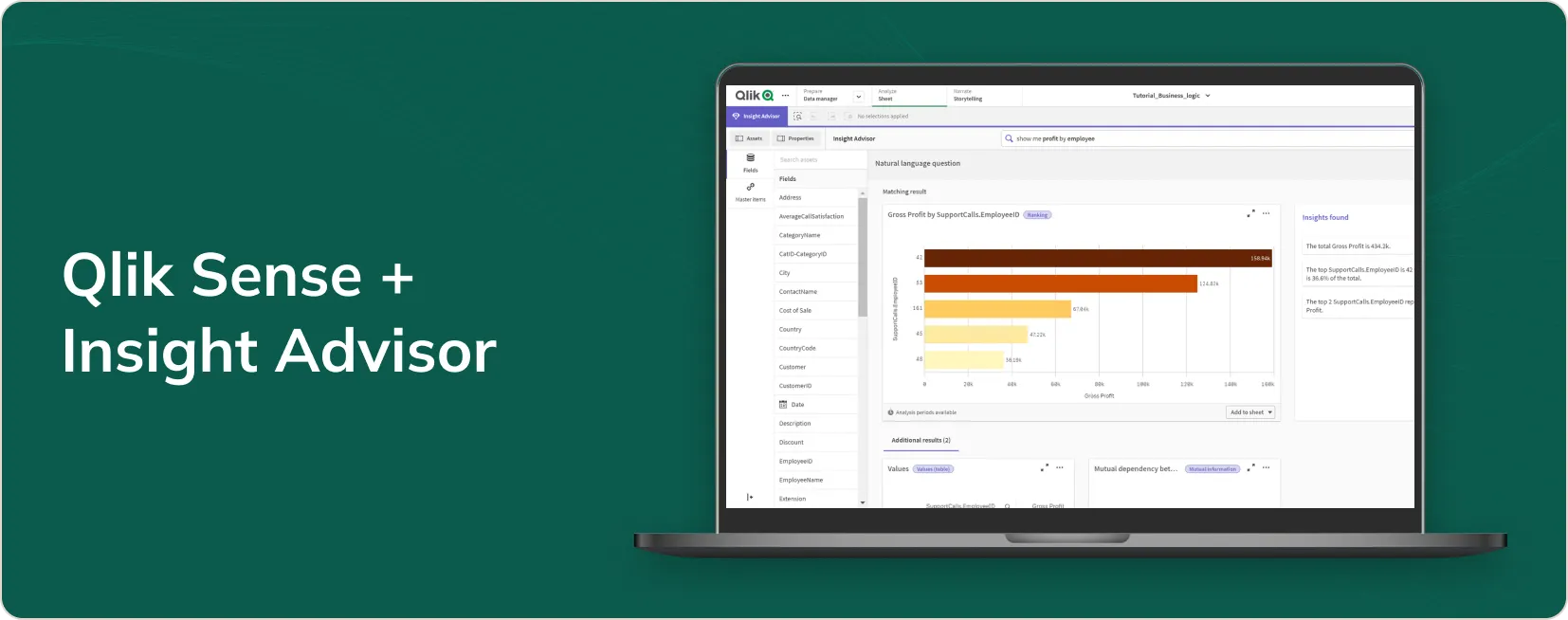
Best for: Discovering hidden relationships in complex datasets Worst for: Linear, hierarchical data analysis or simple reporting
Qlik’s associative engine combined with AI creates unique capabilities for exploring data connections that traditional hierarchical tools miss. This makes it one of the most innovative AI tools for data visualization available today.
Qlik’s Associative Engine: Blessing or Curse?
The Associative Model Problem: While Qlik’s associative engine is powerful, it’s also confusing for traditional BI users. I’ve seen entire teams abandon Qlik because they couldn’t understand why selections in one chart affected seemingly unrelated visualizations.
Memory and Performance Issues:
- In-memory model requires 2-5x RAM of dataset size
- Performance degrades exponentially with data volume
- Reload times can exceed 12 hours for large datasets
- Concurrent user performance highly unpredictable
Development Complexity:
- QlikView script language has steep learning curve
- Data modeling requires specialized expertise
- Limited debugging capabilities
- Version control and deployment processes are cumbersome
AI Insight Advisor Limitations:
- Suggestions often irrelevant to business context
- Natural language generation is generic
- Pattern recognition misses obvious correlations
- Cognitive engine learning is slow and inconsistent
Integration and API Limitations:
- Limited REST API functionality
- Embedding requires complex licensing negotiations
- Real-time data integration challenging
- No direct integration with modern data lakes
Compliance Challenges:
- Audit trails are limited
- Data lineage tracking requires third-party tools
- GDPR compliance configuration is complex
- Row-level security implementation is difficult
Total Cost Reality:
- Analyzer licenses: $30/user/month
- Professional licenses: $70/user/month
- Server infrastructure: $30,000-100,000
- Implementation services: $100,000-300,000
- Ongoing development: 40% of annual license costs
Pricing: $30-70/user/month, plus significant infrastructure and services costs
Source: Qlik Sense Pricing Details
5. Google Looker Studio + Duet AI
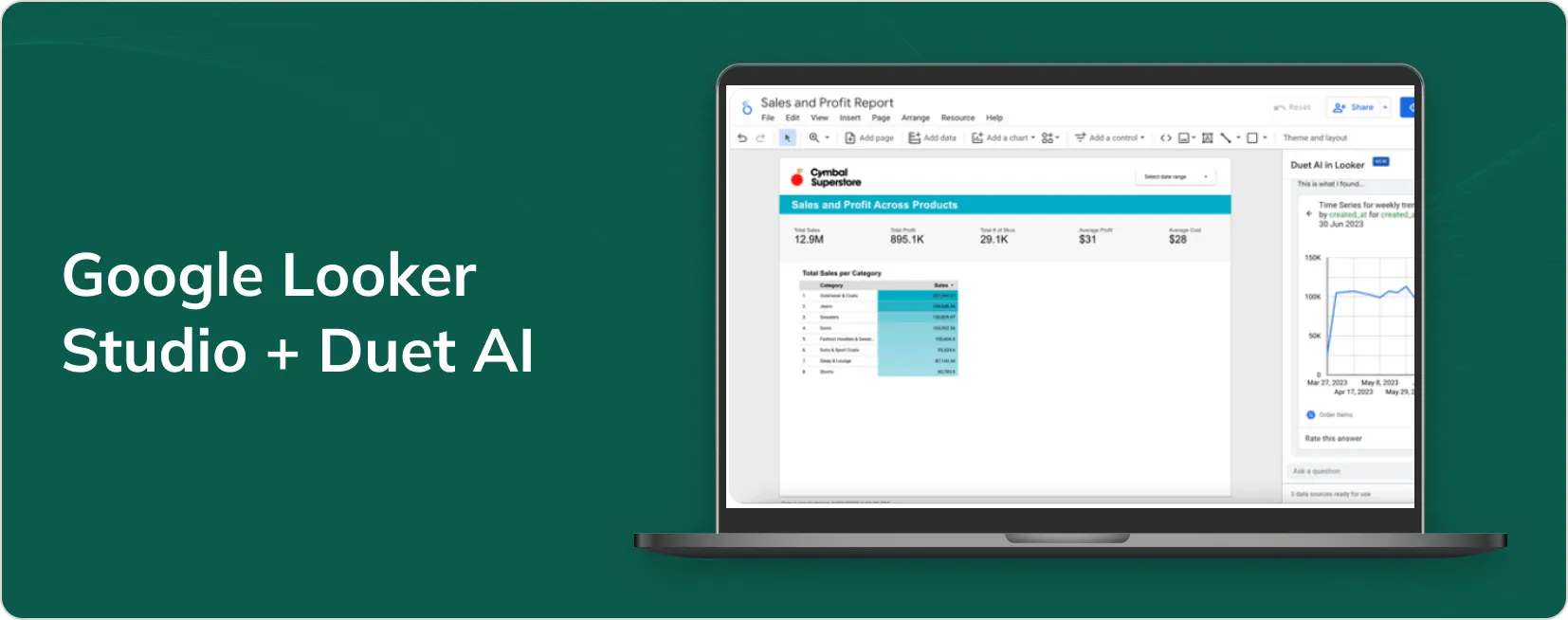
Best for: Small teams with Google Workspace seeking free AI capabilities Worst for: Enterprise security requirements or complex data governance
Looker Studio’s Duet AI integration provides enterprise-grade capabilities in a free tool—perfect for small teams exploring data visualization using AI without budget constraints.
The “Free” Tool That Isn’t:
Hidden Limitations:
- 50GB data limit per report
- 10 data sources maximum per report
- No row-level security capabilities
- Limited API functionality for automation
Performance Reality:
- Reports with >1M rows become unusable
- Refresh times often exceed 30 minutes
- Concurrent user performance degrades rapidly
- No caching capabilities for complex calculations
Enterprise Failure Case: A mid-size consulting firm tried to standardize on Looker Studio for client reporting. Within three months, they had to migrate to paid solutions because:
- Client data couldn’t be properly secured
- Reports broke when data exceeded limits
- No audit trails for compliance requirements
- Professional appearance was impossible to achieve
Data Privacy Concerns:
- Data processed on Google’s servers globally
- Limited control over data residency
- No HIPAA compliance guarantees
- Metadata shared with Google’s systems
Integration Limitations:
- Limited connector options compared to paid tools
- No real-time data refresh capabilities
- Basic transformation capabilities only
- No version control or deployment management
When It Actually Works: Looker Studio excels for small teams (<10 users) with simple reporting needs, Google Workspace integration, and non-sensitive data. Perfect for marketing dashboards, basic sales reporting, or departmental analytics.
Pricing: Free, but enterprise needs require Google Cloud Platform costs
Source: Google Looker Studio Features
6. Sisense Fusion AI
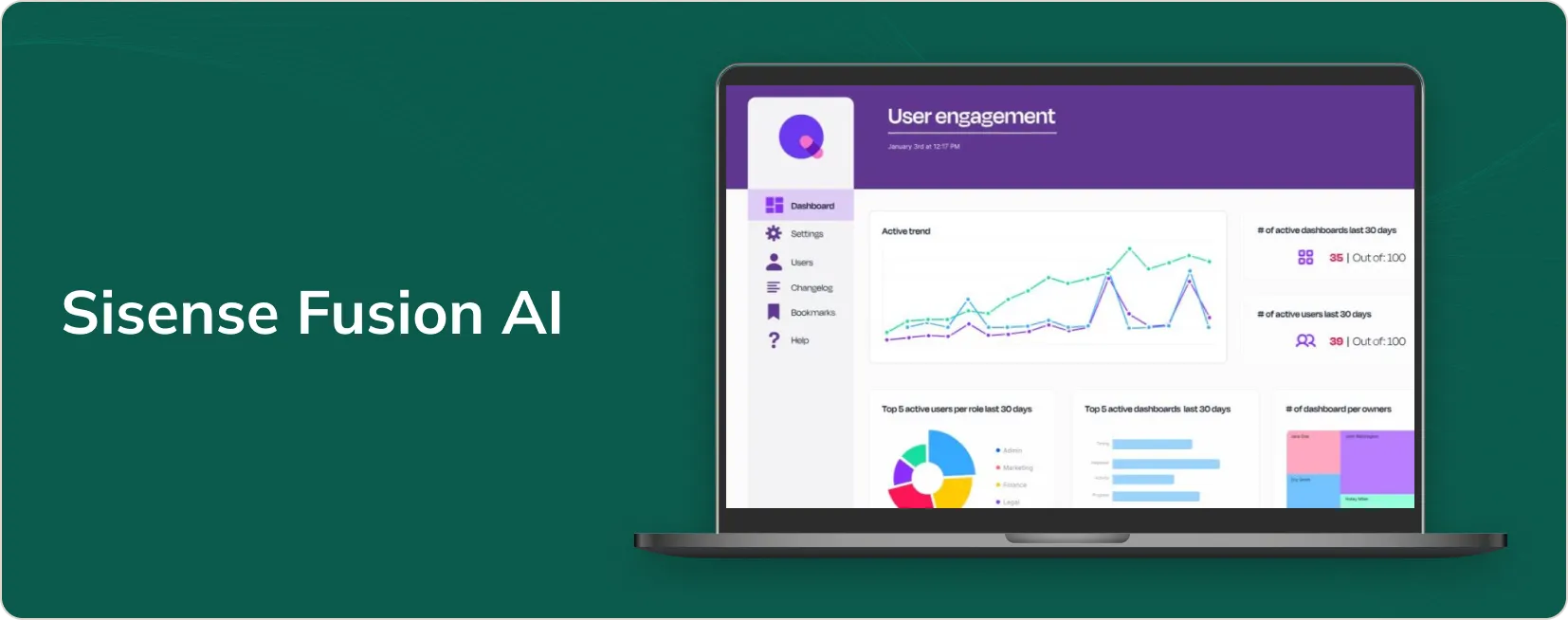
Best for: Embedding analytics into existing business applications
Sisense focuses on making AI insights available within existing workflows rather than requiring separate dashboards, making it ideal for organizations seeking embedded data visualization AI tools.
Strong for embedded analytics but expensive custom development. Implementation costs often exceed $500,000. API limitations require significant workarounds.
Embedded advantages:
- Pre-built AI widgets for custom applications
- Narrative intelligence generates written insights
- Built-in predictive modeling
- Conversational queries within embedded dashboards
Pricing: Custom pricing based on deployment, typically $50-100/user/month
Source: Sisense Enterprise Solutions
7. Domo AI Chat
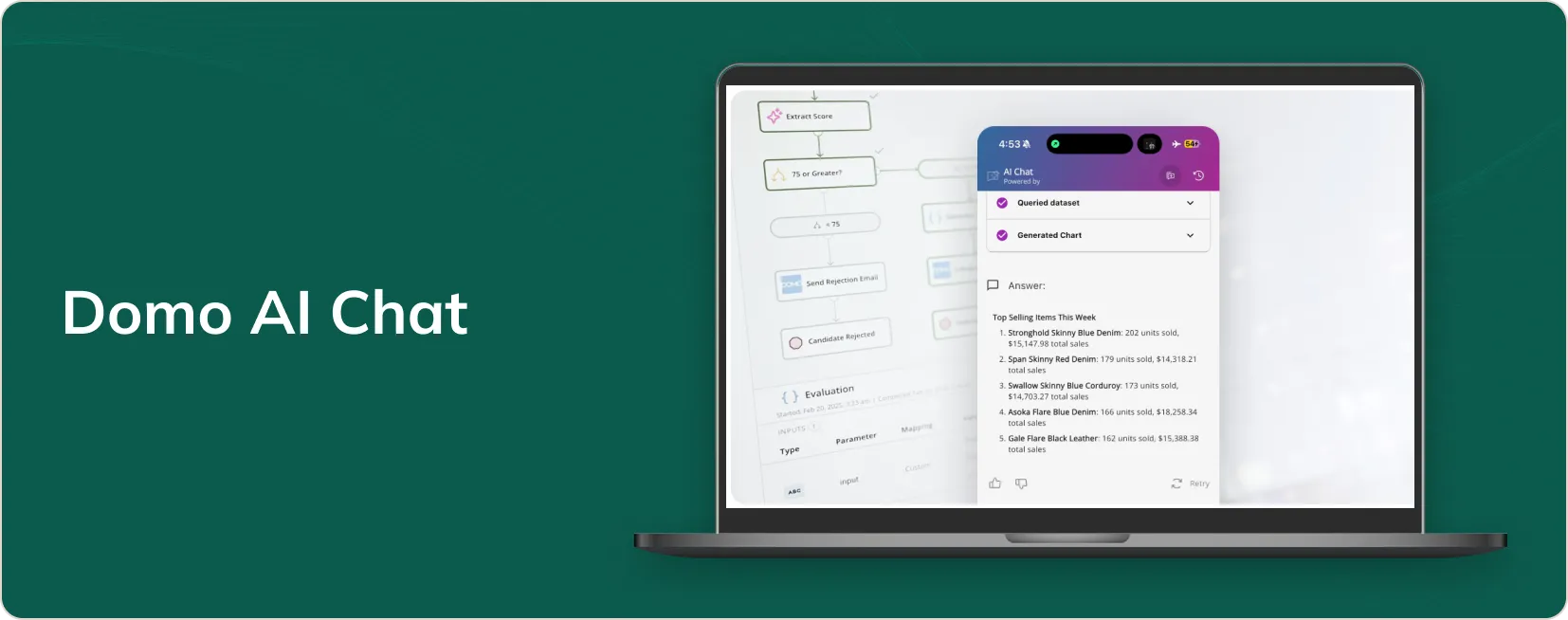
Best for: Executive dashboards and real-time operations monitoring
Domo’s AI Chat enables natural language interactions with live data streams—particularly valuable for operational dashboards requiring real-time data visualization using AI.
Excellent real-time capabilities but vendor lock-in is severe. Pricing model becomes prohibitive above 200 users. Limited customization options.
Real-time strengths:
- Live analysis of streaming data
- Conversational interface for quick queries
- Predictive alerts for future conditions
- Automated executive summaries
Pricing: $83/user/month for standard plan with AI features
Source: Domo Business Cloud Pricing
8. Zoho Analytics + Zia
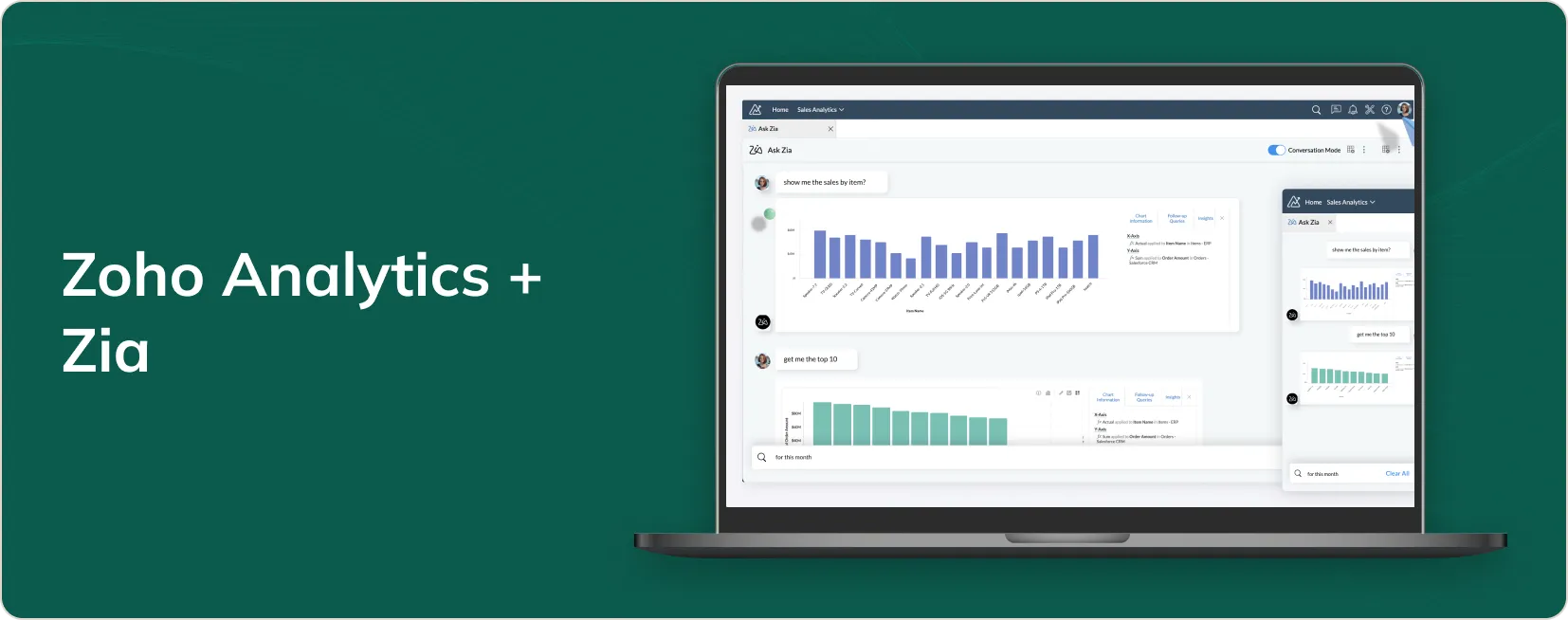
Best for: Small to medium businesses seeking affordable AI analytics
Zoho’s Zia AI provides enterprise-level capabilities at SMB pricing, with deep integration across Zoho’s business suite. It’s among the most cost-effective AI data visualization tools for growing businesses.
Best value for small businesses but doesn’t scale. Integration with non-Zoho systems is problematic. AI capabilities are basic compared to enterprise tools.
SMB-focused features:
- Ask Zia: Natural language querying across business data
- Smart insights discovery
- Predictive scenarios based on current trends
- Anomaly detection for business metrics
Source: Zoho Analytics
9. ChatGPT Advanced Data Analysis
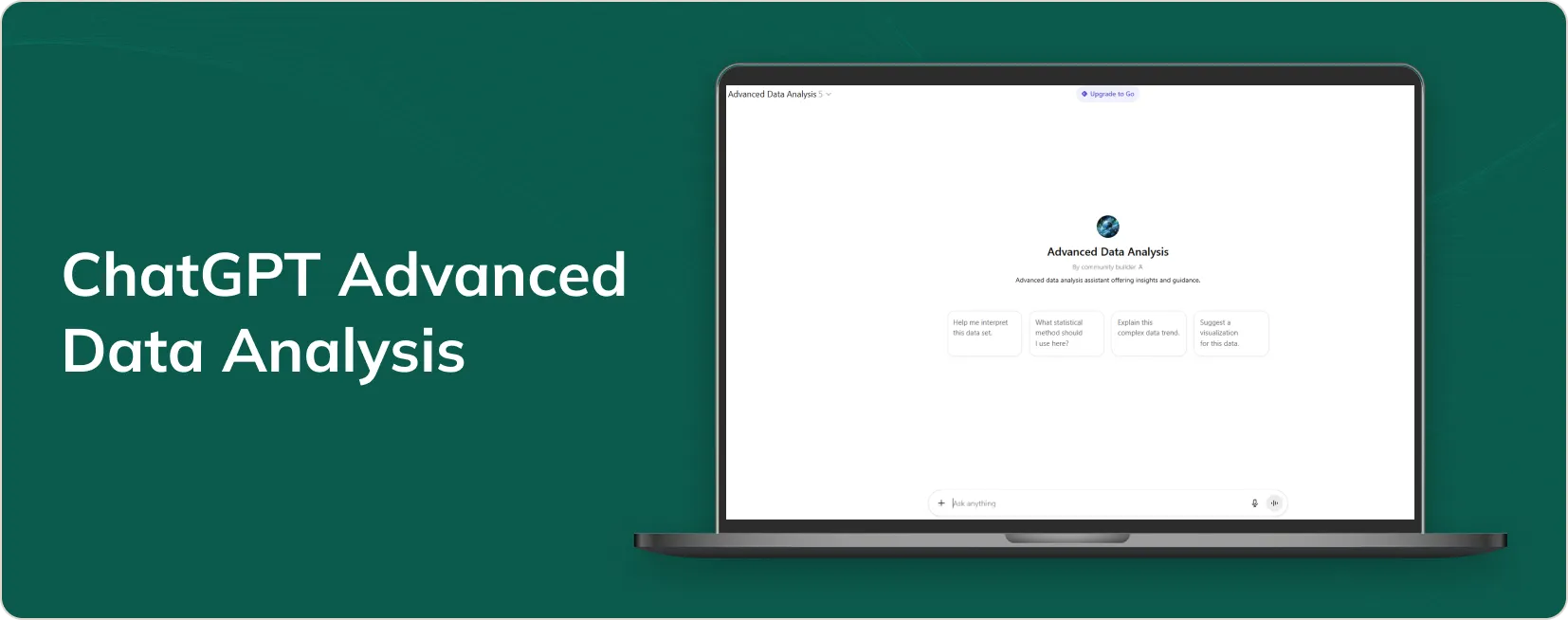
Best for: Ad-hoc analysis and rapid prototyping
While not a traditional BI tool, ChatGPT’s data analysis capabilities provide remarkable value for exploratory analysis, representing a unique approach to AI for data visualization.
Excellent for ad-hoc analysis but no enterprise controls. Data privacy concerns for sensitive information. No persistent storage or sharing capabilities.
Unique use cases:
- Upload CSV files for immediate analysis
- Generate custom analysis scripts on demand
- Perform statistical testing without setup
- Create visualizations from raw data
Real example: I used ChatGPT to analyze client survey data, creating correlation analyses that identified key satisfaction drivers in under an hour—work that traditionally required a full day.
Pricing: $20/month for ChatGPT Plus with Advanced Data Analysis
Source: OpenAI ChatGPT Plus
10. MonkeyLearn Studio
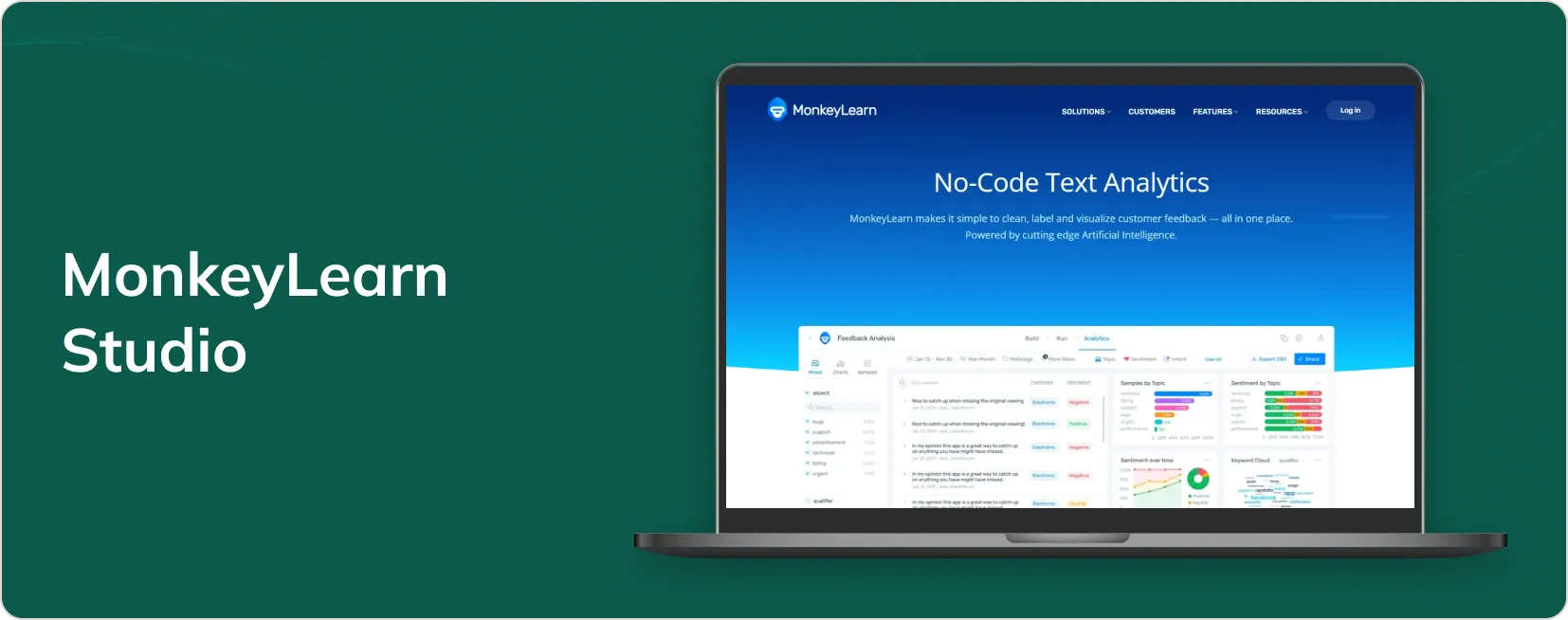
Best for: Text analytics and sentiment visualization
Specialized for organizations dealing with large volumes of unstructured text data like customer feedback and support tickets. It’s one of the few ai-powered data visualization tools specifically designed for text analysis.
Specialized text analytics tool that does one thing well. Limited integration capabilities. Expensive for general-purpose visualization needs.
Text-focused AI:
- Automatic text classification
- Sentiment analysis with visual tracking
- Keyword extraction and theme identification
- No-code workflow building
Pricing: $299/month for team plan with full AI text analysis
Source: MonkeyLearn Pricing Information
AI vs Traditional Data Visualization: What’s Actually Different?
After implementing both approaches across dozens of companies, here are the practical differences:
| Traditional Visualization | AI-Powered Visualization |
|---|---|
Manual chart creation | Automatic visualization generation |
| Requires SQL/technical skills | |
| Dynamic pattern discovery | |
| Reactive analysis | |
| Time-intensive |
The real difference: Traditional tools show you what happened. AI tools explain why it happened and predict what might happen next.
Data Visualization Using AI: Industry Success Stories
Healthcare: Predictive Patient Care
Siemens Healthineers utilizes AI in healthcare data visualizations to present medical imaging data, employing deep learning to identify anomalies in CT scans and MRIs, which can be displayed to radiologists via an interactive 3D model.
A regional hospital network implemented AI visualization to analyze patient flow and treatment outcomes. The system identified patterns in readmission data that nurses and doctors hadn’t noticed.
The Discovery: Patients discharged between 6-8 PM had 23% higher readmission rates due to limited pharmacy hours and reduced family support availability.
The Impact: By adjusting discharge scheduling and implementing evening support protocols, the network reduced readmissions by 18% and saved $3.2M annually while improving patient outcomes.
Source: Healthcare AI Implementation Studies
Retail: Dynamic Inventory Optimization
The Challenge: A sporting goods retailer with 150 locations needed to optimize inventory based on local factors beyond basic seasonality.
The AI Solution: We implemented Power BI Copilot to analyze weather patterns, local events, and purchasing trends across all locations using advanced data visualization using AI techniques.
The Discovery: The AI revealed that specific weather conditions triggered equipment purchases 3-5 days later, but only in regions with particular demographic profiles.
The Impact: Predictive stocking increased inventory turnover by 34% while reducing stockouts by 41%, generating an additional $4.8M in annual revenue.
Source: McKinsey Retail AI Analytics Report
These examples demonstrate why many organizations partner with expert data visualization consulting services to maximize their AI visualization investment and achieve similar results.
“AI visualization tools are not just about creating charts—they’re about empowering organizations to uncover hidden insights and make predictive, data-driven decisions at unprecedented speed.” — McKinsey & Company, The State of AI 2025 McKinsey AI Insights
Implementation Timeline Reality Check
Typical Enterprise Deployment (200+ users):
Months 1-2: Requirements gathering and vendor selection
- Tool evaluation and pilot projects
- Technical architecture planning
- Data governance framework development
Months 3-4: Infrastructure setup and data preparation
- Server provisioning and configuration
- Data source integration and testing
- Security and compliance setup
Months 5-7: Development and configuration
- Dashboard and report development
- User acceptance testing
- Training material development
Months 8-9: Training and rollout
- Administrator training
- End-user training programs
- Phased deployment to user groups
Months 10-12: Optimization and expansion
- Performance tuning
- Additional use case development
- Advanced feature enablement
Reality: Most organizations underestimate implementation timelines by 50-100%.
Making Your Decision: A Practical Approach
Start with These Critical Questions:
- What’s your real budget? Include implementation, training, and three years of operational costs.
- How complex is your data? Tools that demo well with clean data often fail with real-world complexity.
- What’s your risk tolerance? Vendor lock-in, compliance requirements, and change management challenges vary dramatically.
- Who will maintain this? AI tools require ongoing optimization, model retraining, and performance monitoring.
My Honest Recommendations by Scenario:
Microsoft-Heavy Environment, Quick ROI Needed: Power BI Copilot, despite its limitations, integrates seamlessly and delivers value quickly. Budget $50,000-150,000 for proper implementation.
Complex Analytics, Budget Available: Tableau Einstein, but only with dedicated BI team and 6-12 month implementation timeline. Budget $200,000-500,000 total cost.
Search-Driven Culture, Vendor Lock-in Acceptable: ThoughtSpot, but pilot extensively before committing. Have a backup plan for data migration.
Small Team, Simple Needs: Google Looker Studio or Zoho Analytics. Understand the limitations upfront and plan for migration as you grow.
Regulated Industry: Work with specialized consultants regardless of tool choice. Compliance requirements often drive 50% of implementation costs.
The Future Reality: What’s Actually Coming
Agentic AI: Promise vs. Reality
While vendors promise AI agents that automatically take actions based on insights, the reality is more complex:
Current Capabilities:
- Basic alert generation and threshold monitoring
- Simple workflow triggers based on data changes
- Automated report generation and distribution
Coming Challenges:
- AI decision-making liability and accountability
- Integration complexity with existing business systems
- Regulatory approval for automated financial or clinical decisions
Multimodal Integration
AI visualization will incorporate text, voice, images, and traditional data into unified analyses, providing richer context for decision-making.
Real-Time Intelligence
The gap between data collection and insight is approaching zero. New tools provide instantaneous business responses to changing conditions.
“AI agents are autonomous or semi-autonomous software entities that use AI techniques to perceive, make decisions, take actions and achieve goals in their digital or physical environments.” — Haritha Khandabattu, Senior Director Analyst at Gartner (Link to Gartner research)
Conclusion: Making Your AI Data Visualization Decision
AI data visualization isn’t about replacing human judgment—it’s about amplifying human intelligence with machine capabilities. The organizations succeeding with these tools focus on practical applications that solve real business problems. They start simple, invest in change management, and scale based on demonstrated value.
My recommendation: If you’re new to AI visualization, start with your existing ecosystem. Microsoft users should try Power BI Copilot. Google Workspace teams can experiment with Looker Studio’s AI features. Everyone else should consider ThoughtSpot for search-driven analytics or Tableau for advanced capabilities.
The data revolution is here. Companies that master AI visualization now will shape markets while others struggle to catch up.

